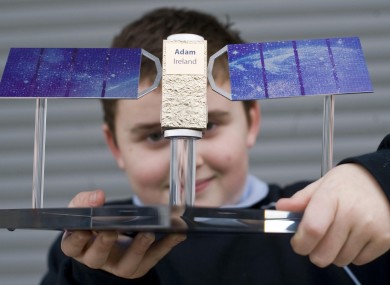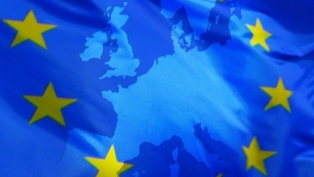Daughter watches in anguish as she sees her mother die on a treadmill in a Donegal gym


Angela Grogan (60) took ill while running on a treadmill in Carndonagh, Co Donegal.
A MOTHER of four died yesterday as ran on a treadmill at her local gym with her daughter on the treadmill beside her.Her daughter, Michelle (30) was using a treadmill alongside, when her mother suffered a suspected heart attack and died. Mrs Grogan’s body was taken to Letterkenny General Hospital for a post-mortem.“She was walking on the treadmill at first and then she was running and then it happened,” said heartbroken Michelle.The family live in Glengad Mountain, Malin, on the Inishowen peninsula.Ms Grogan and her English-born husband Michael (58) moved to her native Glengad from Lancashire in 1996. Their other children are Clare (27) and Laura (25), and she was grandmother to Riley (5).
Angela Grogan (60) took ill while running on a treadmill in Carndonagh, Co Donegal.
A MOTHER of four died yesterday as ran on a treadmill at her local gym with her daughter on the treadmill beside her.
Her daughter, Michelle (30) was using a treadmill alongside, when her mother suffered a suspected heart attack and died. Mrs Grogan’s body was taken to Letterkenny General Hospital for a post-mortem.
“She was walking on the treadmill at first and then she was running and then it happened,” said heartbroken Michelle.
The family live in Glengad Mountain, Malin, on the Inishowen peninsula.
Ms Grogan and her English-born husband Michael (58) moved to her native Glengad from Lancashire in 1996. Their other children are Clare (27) and Laura (25), and she was grandmother to Riley (5).
Our Lifestyle ‘influences our ageing brain’
Lifestyle factors largely account for why some people stay mentally sharper in old age than others, a study has shown.
Researchers found genetic factors account for 24% of changes in intelligence over a person’s lifetime, meaning that the biggest effect was environmental.
The findings, published in the journal Nature, also suggest that many of the genes that affect intelligence in childhood also influence intelligence in old age.
Scientists in the UK and Australia combined DNA analysis with data from people who took intelligence tests at age 11, and again aged 65 to 79. More than half a million genetic markers in around 2,000 people were studied.
Professor Ian Deary, from the University of Edinburgh, said: “Until now, we have not had an estimate of how much genetic differences affect how intelligence changes across a lifetime. These new findings were possible because our research teams were able to combine a range of valuable resources.
“The results partly explain why some people’s brains age better than others. We are careful to suggest that our estimates do not have conventional statistical significance, but they are nevertheless useful because such estimates have been unavailable to date.”
Australian co-author Professor Peter Visscher, from the University of Queensland, said: “Unique data and new genome technologies combined with novel analysis methods allowed us to tackle questions that were not answerable before.
“The results also strongly suggest how important the environment is helping us to stay sharp as we age. Neither the specific genetic nor environmental factors were identified in this research. Our results provide the warrant for others and ourselves to search for those.”
Professor James Goodwin, from the charity Age UK, which funded the study, said: “This research is extremely exciting as it provides a greater understanding about why mental abilities change throughout our lifetime. It is also incredibly positive as it suggests that we can have a real influence on how our brain ages through our lifestyle and other external factors.
“The key now is to establish which lifestyle and environmental factors are most important so that we are able to do all we can to maximise our chances of ageing well.”
€670m satellite to be named after a Swords 10 year old boy “Adam”
An Irish 10-year-old boy can lay claim to fame: by having a e670 million satellite named after him.

Adam Vaughan poses with a model of the Galileo satellite that will be named after him.
MANY OF US are tickled by the notion of travelling into space – or even owning a piece of memorabilia that has travelled beyond the boundaries of our planet.
Now, one Irish 10-year-old can claim the next best thing – by having a €670 million satellite named after him.
Adam Vaughan, from Swords, won the right to have a Galileo satellite named after him after winning an art competition on the theme of space and aeronautics.
His drawing ‘The Solar System’ was deemed the winner by a panel of judges including illustrator Don Conroy and Astonomy Ireland’s David Moore.
Similar competitions were held in parallel in each of the 27 European Union member states, with the winner in each gaining the right to have one of the 30 satellites named after them.
Other winners who will have satellites named after them include Thijs (11) from Belgium, and Natalia (9) from Bulgaria.
The Galileo project – an endeavour of the European Space Agency – is costing around €20 billion in total, and will see 30 new satellites launched into orbit over the next seven years.
The constellation of satellites will offer a European alternative to navigational satellites used by the US military, Russia and China – each of which could potentially be shut down in times of international conflict.
The provision of the Galileo network – which will be made available for free use by civilians, as well as EU militaries – will ensure that devices like sat-navs and other GPS systems can work without the assistance of the US, Chinese or Russian satellites.
In a technological advance, the new breed of satellites will also facilitate two-way communication – with the satellites being able to detect distress signals sent by a user’s device, and then relay another message that assistance has been summoned.
EU treaty may not require a ratification in a referendum in Ireland
An EU fiscal treaty makes it “more likely” that a referendum can be avoided in Ireland.
An EU fiscal treaty may not require a ratification in a referendum in Ireland
The latest draft of the EU fiscal treaty makes it “more likely” that a referendum can be avoided in Ireland, according to a leading legal expert.
Dr Gavin Barrett of the UCD School of Law above photo has said that the new draft seemed to suggest that the “automatic requirement” for a referendum was now gone and that it was more likely that it could be avoided.
Earlier drafts had said that a new “balanced budget” rule would have to be be enshrined constitutionally. Dr Barrett said this was no longer the case.
He said the draft meanwhile strengthens a bailout clause which states that countries can not receive bailout monies unless they ratify the treaty.
Education Minister Ruairí Quinn rules out a Budget u-turn over pupil teacher-ratio’s
Education Minister Ruairí Quinn has today refused to make another Budget u-turn, despite the concerns of Fine Gael backbenchers.
Small schools, mainly in rural areas, are to have their pupil teacher-ratio increased over the next two years.
Last night, Fine Gael backbenchers met to demand the measure be reversed, similar to the way the Delivering Equality of Opportunity in Schools (DEIS) cuts were.
“This is not an assault on rural Ireland,” said Minister Quinn.
“This is an attempt to get some reasonable savings at a time when we have to get those savings, and at the same time, maintaining the fabric of rural Ireland in the second decade of the 21st Century, which is totally different to what it was 40 years ago.”
A Grisly mystery unfolds in Hollywood as severed body parts are found
'IT IS NOT A FILM SCRIPT? ‘IT’S REAL, OH MY GOD, IT’S FOR REAL.’
Los Angeles police puzzled as an unidentified dismembered corpse is found in parts over the past two days
It sounds like a plotline from a film noir thriller: a dismembered corpse has been found in parts over the past two days in Los Angeles, directly beneath the famous Hollywood sign.
Police conducted an intensive search of Bronson Canyon Park, an area of the Hollywood hills known not for its grisly murders but rather for its glamour, its dizzying views, its hilltop mansions.
First, they were alerted to a severed head left ghoulishly in a plastic bag. Then, a day later, they stumbled on a severed hand, unbagged; then another, then his feet.
At first, they thought the man an Armenian in his 40s, with salt and pepper hair. The they backtracked, saying he could be as old as 60, and his ethnicity also less certain. They did not release a name.
The police’s initial theory was that the man was killed elsewhere, then brought to Bronson Canyon in the expectation that his remains would be discovered sooner than later. Forensics teams said the killing appeared to be recent, and there were few signs of decomposition.
The head was discovered by a professional dog walker named Lauren Kornberg, who was out exercising nine animals. She told a local radio station how one of her charges, a golden retriever named Indiana Bones, pulled the plastic bag containing the head out of a bush.
“He was going crazy,” Kornberg told KPCC. “He was digging, digging, digging, barking.”
The plastic bag was badly shredded, but Kornberg could see the head inside. At first she assumed it was a film or television prop.
Indiana Bones dropped the bag out of his mouth and it rolled about 30ft down a hill. Kornberg’s mother, who was with her, convinced her to take a closer look.
“Even as we got closer, we still couldn’t say for sure whether it was … real,” she said, “until my mom was literally about a foot away, face to face, and could see bloody hair and eyeballs, and gasped and said: ‘It’s real, oh my God, it’s real.’”

No comments:
Post a Comment